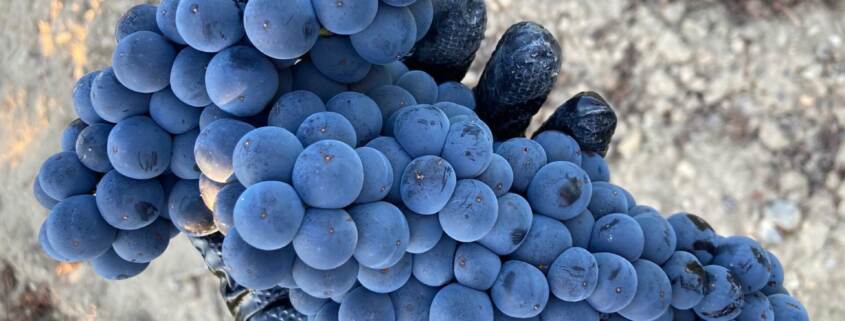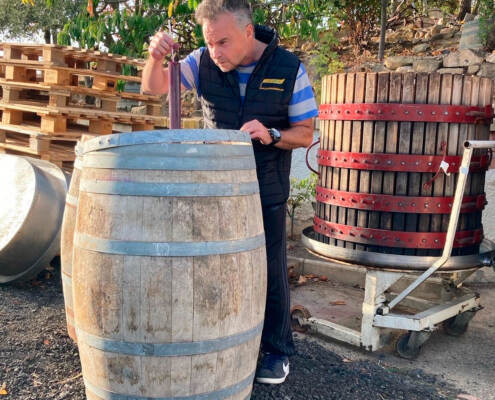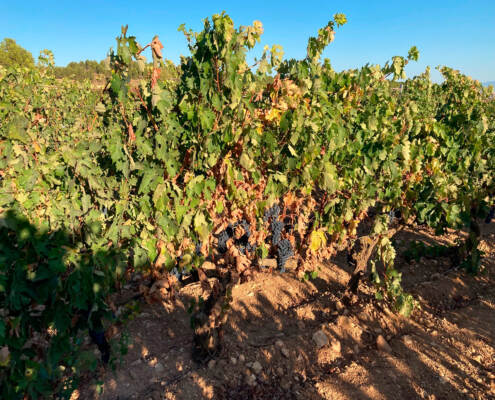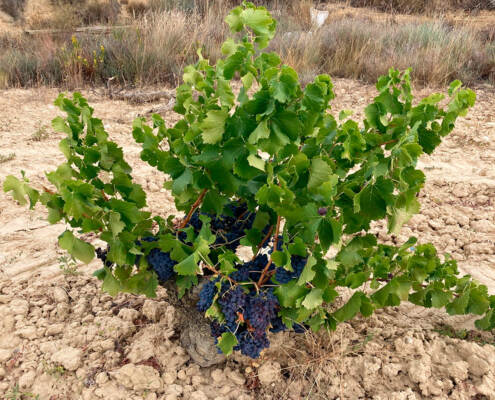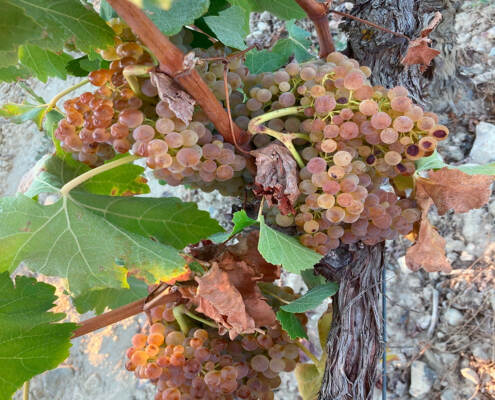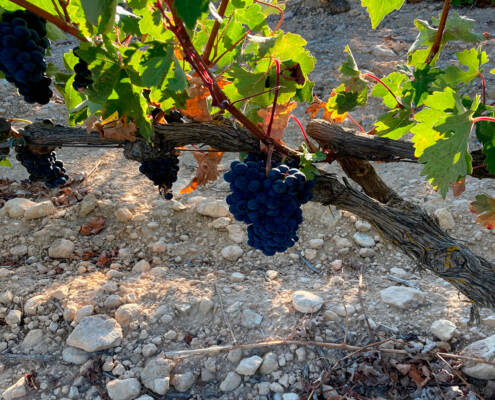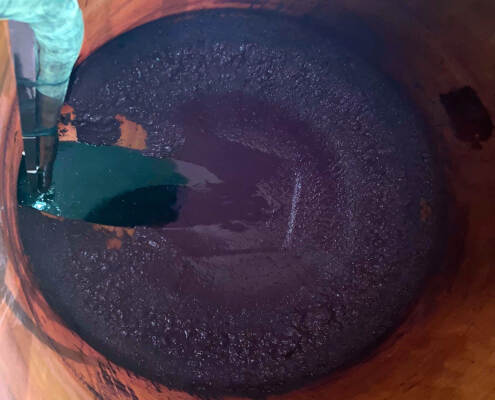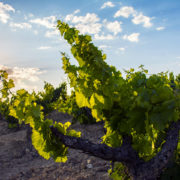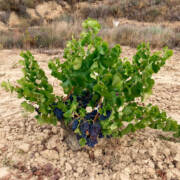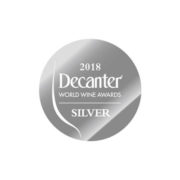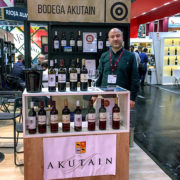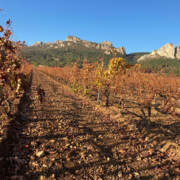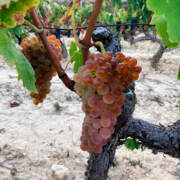Bodega Akutain-2022 Harvest
With some delay after a rather busy end of the year, we continue with our habit of sharing on our website the notes that we internally collect about the developement of the year and the harvest. We are pleased to present our feelings corresponding to the 2021 campaign / harvest. The advantage of the delay in preparing these notes is that we have more information about the wines resulting from the vintage… This information will then be very useful for us in Akutain when making decisions, and we also believe that it will be very interesting for those consumers who, when drinking an Akutain wine, have the curiosity and the desire to expand the information about that wine, the vintage, similarities / differences between vintages …
We like to explain that in these notes we usually capture our own impressions and memories about our vineyards and their surroundings, located around our winery in Haro (Rioja Alta), right on the slopes of the Obarenes mountains, in the area that is placed between the towns of Haro, Villalba, Sajazarra, Cihuri and Anguciana. Consequently, there may be variations towards the experiences obtained during the same campaign in neighboring regions.
The 2021/2022 winter has been very cold, which has totally conditioned the work inside the winery during 2022 until the harvest: with the cold, the malolactic fermentation of the entire 2021 vintage was delayed until May/June (the bacteria in charge of this does not like working in cold conditions…), which meant delays in its move from tank to barrel and consequently also delays in the bottling of other vintages… Fortunately we were able to reach harvest time with all the tasks up to date.
As for the rain, during the winter and the beginning of spring fell more or less the average amount for our region, which came in handy to withstand what was to come…
From the middle of spring, and throughout the summer until the beginning of September, we have had one of the driest and hottest summers we can remember. Although the first consequence of this meant less stress in terms of fungal diseases (mildu, oidiu…) and consequently less need for treatments (copper, sulfur…), such a pronounced heat and drought caused an extraordinary hydric stress for the vines: there were rumours of yield drops of 40%, we witnessed in July/August the reaction of vines in a couple of areas proceeding to kill and completely dry their own bunches in order to protect themselves and survive… the situation seemed to be looking pretty bad.
However, the ability of vines to find water wherever with its own roots is amazing, and it helped to survive until the beginning of September, when a series of rainshowers fell arriving just in time and being highly celebrated, since they alleviated the difficult situation. Rains were followed then by weeks of good weather from mid-September until the end of October, allowing us to wait for optimum grape ripening. In addition, we had during these weeks the traditional Rioja Alta cool nights, bringing the grapes to protect themselves from the cold with still thick and tight skins. Our area, to the north, is one of the last to be harvested each year in La Rioja and those extra weeks have been key so that the earlier September rains had time being assimilated by the vines before harvest.
In order to choose the ideal moment to start the harvest this year, it has been very important to monitor acidity: the heat and the drought caused the fruit to reach an acceptable point of ripeness quite early; however, there was a time when waiting for a greater degree of ripeness meant a big risk of losing acidity, which is very necessary in our wines; finding the balance between that ripeness and acidity has been key.
The situation was more difficult for winegrowers who used irrigation during the drought (at Bodega Akutain we are convinced that vines don’t need irrigation under normal conditions and we never water any of our vineyards), as they have had trouble reaching ripeness.
In Akutain’s case, harvest ended up being almost 2 weeks ahead of a normal year and we began harvesting our Gembres vineyard on September 26 and 27. We then harvested our La Manzanera vineyard on the 28th and Fonzabala on the 29th and 30th. Finally, we finished introducing grapes into the winery on October 1st with grapes from our Cihuri vineyard. Finaly, in 2022 we finished harvest nearly 2 weeks earlier than in 2021 and 1 week earlier than in 2020.
As for the grapes harvested, the 2022 vintage has given us, after the very dry summer, healthy and high-quality grapes, although with a certain sacrifice in quantity: the yield has not only been below the maximum per hectare allowed by the DOCa. Rioja for red varieties (as almost always in Akutain), but below our usual average, although somewhat better than in 2021.
At the time of writing these lines, 2022’s wines have already finished malolactic fermentation, they have been already qualified and only verification by the DOCa Rioja is pending (will take place next week). The alcoholic fermentation proceeded quickly and without sudden stops or excessive heating in October right after harvest, resulting into high-quality wines with very balanced analytics (typical alcoholic degrees in classic Rioja of 13 degrees, plenty of color/extract…) . Consequently, we are confident that we will once again have significant guard/ageing potential, although we also managed to keep achieving that “fruity touch” that we like so much for our young, non-barrel-aged wine “Akutain Cosecha”, coming from our Fonzabala vineyard.
Very happy with the results of 2022’s vintage, especially if we take into account the bad forecasts we were having during the months of July/August. We are gradually ageing and stocking in Akutain a series of vintages with great potential (2019, 2020, 2021, 2022…) to be released in the coming years and we are very confident they will help keeping the good level achieved by our latest vintages (receiving very positive ratings and comments from prestigious critics and wine lovers).
Salud!!!!
